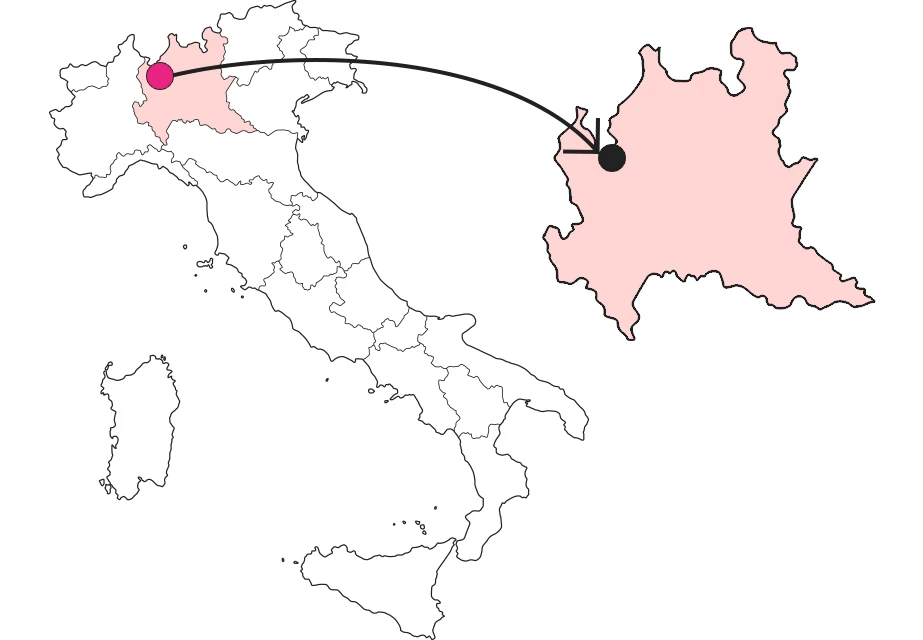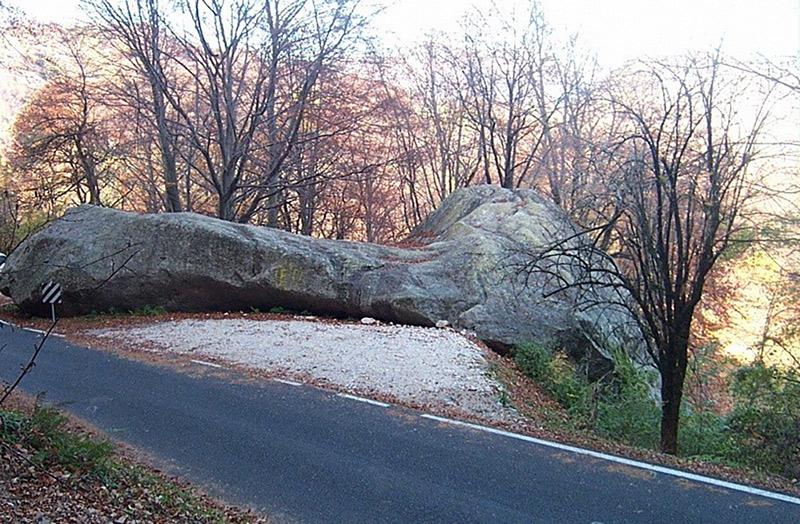SHARRYLAND


At Piano Rancio between history and legend
Ancient stories guarded by rocks that came from who knows where

Where is

What are erratic boulders?
The Larian Triangle is rich in large boulders, known as "erratics" or "trovants." Since their surfaces sometimes bear mysterious carvings and cup marks probably dating back to the Bronze and Iron Ages, which had functions related to religious beliefs and the celebration of ancient rituals, their origins and characteristics have often been explained by supernatural intervention. From a more pragmatic point of view, however, erratic boulders are distinguished from other formations in an area because they have different characteristics from the rock on which they rest. They are, in fact, composed of granites, gneisses and serpentines, rocks found in the Rhaetian and Orobian Alps. Scattered almost everywhere, they have had considerable religious, cultural and economic importance since ancient times. The Romans made are, cippi and stelae from them on which to carve epigraphs. They were also used as a building material by creating building stone or ornaments for churches and houses.
 Calvarone Stone in Lezzeno
Calvarone Stone in LezzenoThe erratic boulders of Piano Rancio
The erratic boulders of the Larian Triangle, concentrated around the Piano Rancio area, have sometimes very evocative names: Pietra Lentina, Luna e Sole in Bellagio, Pendula in Torno, Nairola in Blevio, Sass de la Prea in Canzo, Sasso Calvarone in Lezzeno, and so on; Almost all have a story to tell, and some have even been declared national monuments by the Lombardy region.
Pietra Lentina has an impressive length of 30 m. It is hollowed out by small cavities, which an ancient folk tradition interprets as the sign of flaming balls thrown for fun over the rock by prankster devils. Historically it has been used as a boundary term between the lands of the Abbey of S. Ambrogio (Civenna and Limonta, today Bellagio and Oliveto Lario) and the Community of Bellagio: in fact, we can identify two corner carvings (the boundary) accompanied by letters and numbers.
 Lentina Stone in Bellagio
Lentina Stone in BellagioThe Pietra Luna is so called because of a large crescent-shaped engraving , which legend says is the imprint of the devil's hand. In truth it appears to be an inscription accompanied by the initials PLDB (Pietra Luna) and dates that enshrined the boundary terms always between the Abbey and the Community. DB could mean Di Bellagio, or, Donarini Buttafava, from the name of the noblewoman who owned the monolith. The Sun Stone bears a masterful sun-shaped engraving dated the late 1800s. The first two were declared natural monuments of the Lombardy region in 1984.
The Trail of the Great Finders
It may happen to encounter an erratic boulder during a hike, but if you want to be sure of seeing the most striking ones, the best thing to do is to walk the "Trail of the Great Finders," which starts from Civenna and leads to Magreglio in about 3 hours through villages, woods and pastures. The first boulder you encounter is Pietra Lentina, considered the largest erratic in the Larian Triangle. You then arrive at Pietra Luna and nearby at Pietra Sole.
 View of Civenna
View of CivennaGiants and foundlings
These huge boulders are called erratics or trovants. The origin of this second name raises a smile, because it goes back to a term that, in the collective imagination, we associate with fragile infants, rather than with large, ancient stones. Geologist Giuseppe Nageroni explained in 1949, "It is not a local product, but an allogenic one. This has been realized for centuries by the more modest people of Brianza, who have given all these boulders the generic appellation of "trüant, " trovants, almost as if they were foundlings, children abandoned by their parents after they have taken them far from their native place."
Enter the Map of Italy's Undiscovered Wonders and find treasures where you least expect it... Inspire, Recommend, Share...
Collections


